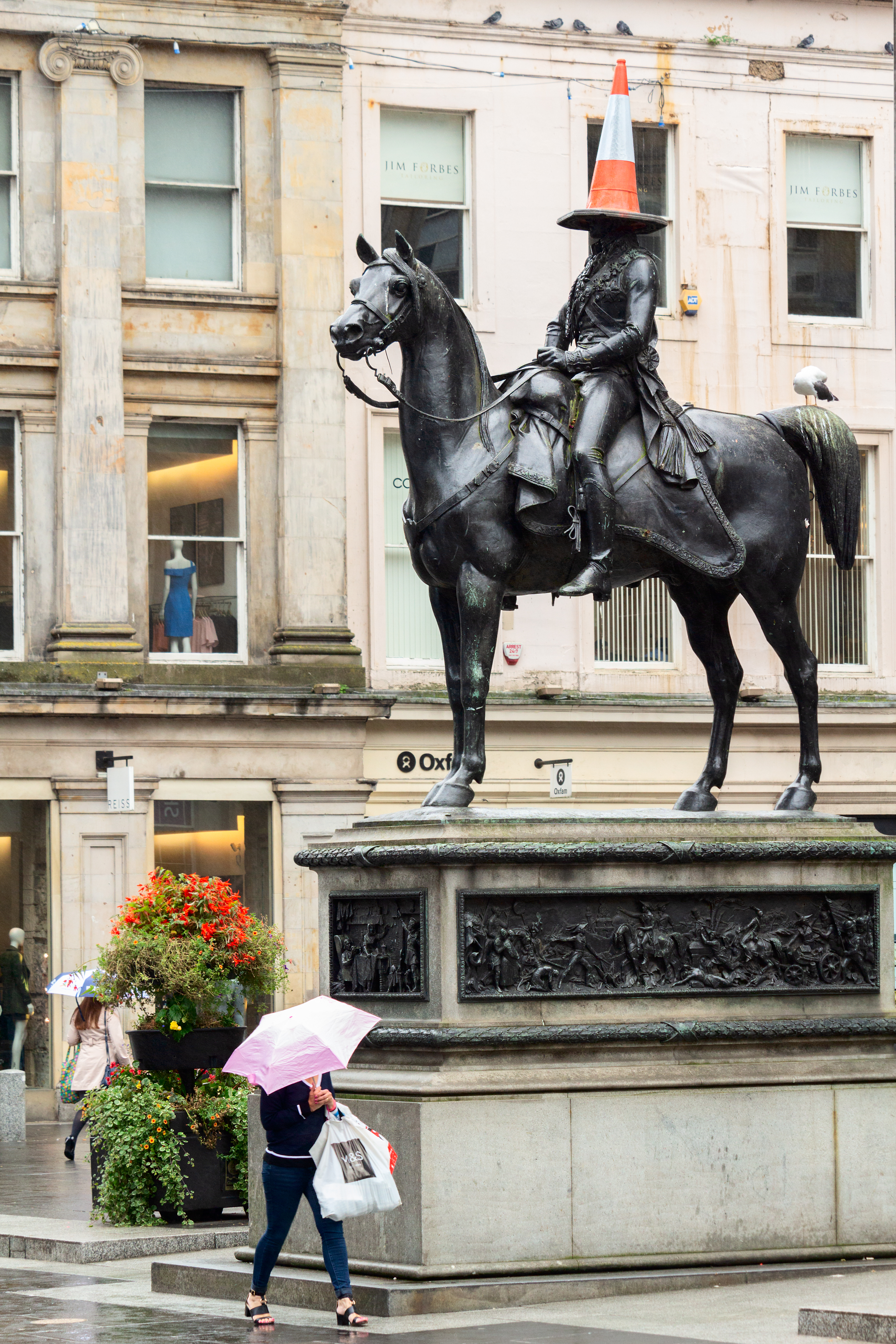|
1844 In Art
Events from the year 1844 in art. Events * The Gypsotheca Canoviana at the Museo Canova in Possagno is completed. * June – Henry Fox Talbot begins publication of ''The Pencil of Nature'', the first book illustrated with photographs from a camera to be commercially published (in London). * July 31 – Opening of the Wadsworth Atheneum, which is today the oldest art museum in the United States. Works * József Borsos – '' Portrait of Kristóf Hegedűs'' * Gustave Courbet ** ''Portrait of Juliette Courbet'' (Musée du Petit Palais, Paris) ** ''The Hammock'' * Honoré Daumier – ''Les bas bleus'' ("Bluestockings", series of lithographs) * Eugène Delacroix – ''Last Words of the Emperor Marcus Aurelius'' * Théodore de Gudin – '' La Salle's Expedition to Louisiana in 1684'' * Joseph Patrick Haverty – '' Patrick O'Brien: The Limerick Piper'' * Carlo Marochetti – Wellington Statue, Glasgow (equestrian bronze) * Eleuterio Pagliano – '' İl pepe e il peperoncino'' * H ... [...More Info...] [...Related Items...] OR: [Wikipedia] [Google] [Baidu] |
Museo Canova
The Museo Canova is a museum established in 1833 at the birthplace of the Italian sculptor Antonio Canova (1757-1822) in Possagno in the province of Treviso in the Veneto, Italy. The museum is dedicated to the life and work of the sculptor and is composed of several parts. The Gipsoteca The Gypsotheca (or gipsoteca), a plaster cast gallery, is housed in a large, basilica-shaped building which displays gypsum models (in fact gipsoteca literally means "collection of chalks"), terracotta sketches, and marbles by the artist. In 1957 the modernist Venetian architect Carlo Scarpa extended a wing of this gallery in order to bathe the semblances in light. Among the casts in the gipsoteca is the one for Canova's Venus Victrix, or more specifically Pauline Bonaparte as Venus Victrix (1805-1808); originally used as a model for the marble, During the first Battle of Monte Grappa in 1917, a Christmas-time bombing severed the head of the plaster and damaged parts of the hands, feet, and ... [...More Info...] [...Related Items...] OR: [Wikipedia] [Google] [Baidu] |
Robert Walter Weir
Robert Walter Weir (June 18, 1803 – May 1, 1889) was an American artist and educator and is considered a painter of the Hudson River School. Weir was elected to the National Academy of Design in 1829 and was an instructor at the United States Military Academy. His best-known work is ''Embarkation of the Pilgrims'' in the United States Capitol rotunda at Washington, D.C. More than 450 of his works are known, and he created many unsigned paintings that may never be attributed to him. Life and career Weir was born to Robert and Mary Katherine Brinckley (or Brinkley) Weir on June 18, 1803 in New York City. His father worked at mercantile and shipping jobs. His mother Mary is remembered for composing the song "The Lord of the Castle." Robert never graduated from college, and he left a job as a mercantile clerk to pursue painting in 1821 at age 18. He studied art in New York City from 1822 to 1824, teaching himself drawing and painting before departing to study in Italy in 1824. He r ... [...More Info...] [...Related Items...] OR: [Wikipedia] [Google] [Baidu] |
London
London is the capital and largest city of England and the United Kingdom, with a population of just under 9 million. It stands on the River Thames in south-east England at the head of a estuary down to the North Sea, and has been a major settlement for two millennia. The City of London, its ancient core and financial centre, was founded by the Romans as '' Londinium'' and retains its medieval boundaries.See also: Independent city § National capitals The City of Westminster, to the west of the City of London, has for centuries hosted the national government and parliament. Since the 19th century, the name "London" has also referred to the metropolis around this core, historically split between the counties of Middlesex, Essex, Surrey, Kent, and Hertfordshire, which largely comprises Greater London, governed by the Greater London Authority.The Greater London Authority consists of the Mayor of London and the London Assembly. The London Mayor is distinguished fr ... [...More Info...] [...Related Items...] OR: [Wikipedia] [Google] [Baidu] |
National Gallery
The National Gallery is an art museum in Trafalgar Square in the City of Westminster, in Central London, England. Founded in 1824, it houses a collection of over 2,300 paintings dating from the mid-13th century to 1900. The current Director of the National Gallery is Gabriele Finaldi. The National Gallery is an exempt charity, and a non-departmental public body of the Department for Digital, Culture, Media and Sport. Its collection belongs to the government on behalf of the British public, and entry to the main collection is free of charge. Unlike comparable museums in continental Europe, the National Gallery was not formed by nationalising an existing royal or princely art collection. It came into being when the British government bought 38 paintings from the heirs of John Julius Angerstein in 1824. After that initial purchase, the Gallery was shaped mainly by its early directors, especially Charles Lock Eastlake, and by private donations, which now account for two-thirds ... [...More Info...] [...Related Items...] OR: [Wikipedia] [Google] [Baidu] |
Rain, Steam And Speed – The Great Western Railway
''Rain, Steam, and Speed – The Great Western Railway'' is an oil painting by the 19th-century British painter J. M. W. Turner. The painting was first exhibited at the Royal Academy in 1844, though it may have been painted earlier. It is now in the collection of the National Gallery, London. The painting gives an impression of great speed in a static painting, an attribute that distinguished Turner from other artists. The work combines the power of nature and technology to create an emotional tension associated with the concept of the sublime. Background The painting was painted close to the end of the Industrial Revolution, which brought a massive shift from an agrarian economy to one dominated by machine manufacturing in the Victorian Era. The railway was among the most potent symbols of industrialization, since this new way of transportation heavily affected industrial and social life. Turner seemed to be a generation ahead of other artists, as he was among the few pain ... [...More Info...] [...Related Items...] OR: [Wikipedia] [Google] [Baidu] |
The Greek Slave
''The Greek Slave'' is a marble sculpture by the American sculptor Hiram Powers. It was one of the best-known and critically acclaimed American artworks of the nineteenth century, and is among the most popular American sculptures ever. It was the first publicly exhibited, life-size, American sculpture depicting a fully nude female figure. Powers originally modeled the work in clay, in Florence, Italy, completing it on March 12, 1843. The first marble version (prime version) of the sculpture was completed by Powers' studio in 1844 and is now in Raby Castle, England. Five more full-sized versions of the statue in marble were mechanically reproduced for private patrons, based on Powers' original model, along with numerous smaller-scale versions. Copies of the statue were displayed in a number of venues around Great Britain and the United States; it quickly became one of Powers' most famous works, and held symbolic meaning for some American abolitionists, inspiring an outpouring of p ... [...More Info...] [...Related Items...] OR: [Wikipedia] [Google] [Baidu] |
Hiram Powers
Hiram Powers (July 29, 1805 – June 27, 1873) was an American neoclassical sculptor. He was one of the first 19th-century American artists to gain an international reputation, largely based on his famous marble sculpture ''The Greek Slave''. Early life and studies Powers was born to a farmer on July 29, 1805 in Woodstock, Vermont. When he was 14 years old, his family moved to Ohio, about six miles from Cincinnati, where Powers attended school for about a year while staying with his father's brother, a lawyer. He began working after the death of his parents, first superintending a reading-room in connection with the chief hotel of the town, then working a clerk in a general store. At age 17, Powers became an assistant to Luman Watson, Cincinnati's early wooden clockmaker, who owned a clock and organ factory. Using his skill in modeling figures, Powers mastered the construction of the instruments and became the first mechanic in the factory. In 1826 he began to frequent the st ... [...More Info...] [...Related Items...] OR: [Wikipedia] [Google] [Baidu] |
Eleuterio Pagliano
Eleuterio Pagliano (2 May 1826 – 5 January 1903) was an Italian painter of the Romantic period as well as an activist and fighter of the ''Risorgimento''. Biography Pagliano was born in Casale Monferrato in the Kingdom of Sardinia and studied at the Brera Academy in Milan until 1848. He initially trained with Giuseppe Sogni, then under the neoclassic painter Luigi Sabatelli. He began his artistic career with paintings in a distinctly Neoclassical style, but very quickly he was won over to Romanticism, as championed then in Milan by Hayez and Tranquillo Cremona. He painted the ''Death of Luciano Manara''. He again joined the ''Risorgimento'' and participated in the popular revolt against the Austrian garrison in Milan known as the '' cinque giornate'' of 1848. He joined the Bersaglieri di Manara in the defense of the Republic of Rome in 1848, but returned to painting by 1851. The urge to battle resumed in 1859, when he rejoined the army fighting in Lombardy. Again retu ... [...More Info...] [...Related Items...] OR: [Wikipedia] [Google] [Baidu] |
Wellington Statue, Glasgow
The equestrian statue of Arthur Wellesley, 1st Duke of Wellington located outside the Royal Exchange, now known as the Gallery of Modern Art, Glasgow, Scotland, is one of Glasgow's most iconic landmarks. It was sculpted by Italian artist Carlo Marochetti and erected in 1844, thanks to public subscription to mark the successful end in 1815 of the long French Revolutionary Wars and the Napoleonic Wars. Since at least the 1980s it has been traditionally capped with a traffic cone by members of the public. The statue is a Category A listed sculpture. Statue The statue of the Duke on his favourite horse Copenhagen was sculpted by Italian artist Carlo Marochetti and erected in 1844. The statue is a Category-A listed monument. Traffic cone In recent times the statue has become known for being capped with a traffic cone. Adorning the statue with a cone had continued over many years: the act was claimed to represent the humour of the local population and was believed to date back to t ... [...More Info...] [...Related Items...] OR: [Wikipedia] [Google] [Baidu] |







